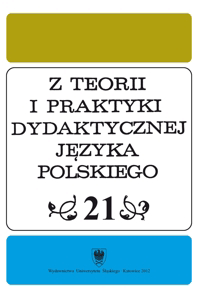Motywy mitologiczne (i nie tylko) w "Psyche" Hansa Christiana Andersena i "Iselin i wilkołaku" Torill Thorstad Hauger
Mythological (and not only such) motifs in Hans Christian Andersen's "Psyche" and Torill Thorstad Hauger's "Iselin and the Werewolf"
Author(s): Ewa OgłozaSubject(s): Language and Literature Studies
Published by: Wydawnictwo Uniwersytetu Śląskiego
Summary/Abstract: Psyche told by Andersen, and Iselin and the Werewolf told by the contemporary Norwegian author are connected by mythological motifs and themes, for example the story of Psyche. This is one reason for discussing both texts in one article. The other reason lies in the diverse values of each of both writings, which could lead to put the tale by Andersen and the novel by Hauger on the college and high school reading list. In the article I analyse and interpret the Andersen’s tale from 1861, explaining the writing context, treating the narration and the main character — the Italian sculptor — as well as decoding Andersen’s thoughts on human’s life, biological and psychic nature of man, artistic creation, fading and fame, the charm of the world and the beauty of art. While discussing the novel Iselin and the Werewolf, I point at how the author tries to convince her adolescent readers that they are able to fight against their fascination with evil and to oppose violence or peer victimization and that they do not have to feel ashamed with their kindness, tenderness or love. I designate as well Hauger’s references to fairy tales — including The Snow Queen, to the myth of Amor and Psyche and to Shakespeare’s tragedy Romeo and Juliet. I make a remark that in both texts the reader can find some motifs related to mythological stories, works of art or literary writings. These motifs correspond with mental states of the story characters, enriching their intellectual contents and reinforcing the message of the tale by Andersen and the novel by Hauger.
Journal: Z Teorii i Praktyki Dydaktycznej Języka Polskiego
- Issue Year: 2012
- Issue No: 21
- Page Range: 36-51
- Page Count: 16
- Language: Polish

